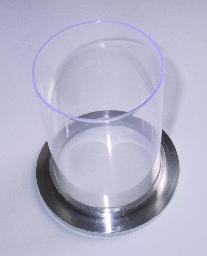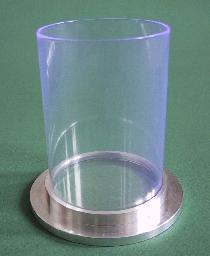

















Other experimental set-ups: IGISOL CUDAC JANOSIK Si Detectors BARRIERS SYRENA ICARE EAGLE CUP - detector for Charged Unwelcome Particles Warsaw-Uppsala
-Swierk collaboration MotivationModern arrays of germanium γ detectors are excelent tools for in-beam investigations of exotic nuclei far from the stability line. For these kind of studies it is however imperative that aggregates of Ge detectors are complemented with ancillary devices which make possible precise identification of the reaction products. Such identification in case of fusion-evaporation experiments can be accomplished by registering light particles emmitted from the compound nucleus: neutrons, protons and α particles. In particular, when heavy-ion induced fusion reactions are used to reach neutron deficient nuclei far from the line of β-stability, many reaction channels are typically open even at moderate beam energy above the Coulomb barrier. The relative cross section is largest for nuclei produced with the emission of a few protons. Channels with small proton multiplicity, α-particle emission and, most important of all, neutron emission, have very small relative cross sections but lead to the most succulent, very neutron deficient nuclei. An experimental prerequisite is thus to detect neutrons emitted from the compound nucleus. For this purpose, systems of liquid scintillator detectors like Neutron Wall and Neutron Shell are used. However, the detection of neutrons, although absolutely essential, is usually not sufficient --- charged particle detectors are also needed in order to select nuclei produced with the emission of the required number of α particles and protons. Powerful systems of charged particle detectors, like SiBall, ISIS, EUCLIDES, DIAMAND, and MicroBall have been constructed and succesfully used in numerous experiments during the last two decades, together with the neutron detectors and the most advanced arrays of γ-ray spectrometers, like EUROBALL and Gammasphere. All the above mentioned highly granular charged particle multi-detector systems are excelent tools to detect, precisely identify charged particles (proton vs. α-particle discrimination) and to provide information on their number. Their efficiency is however limited by the fact that particles not only have to be detected, but also identified. In addition information on the particle multiplicity has to be provided, and this implies segmentation of the active detector area. In special situations, very interesting neutron deficient nuclei can be produced by the exlusive emission of neutrons from the compound nucleus. One such example is the 101Sn nucleus which would provide direct information on neutron single particle energies with respect to the 100Sn core, and which can be produced in the reaction 54Fe+40Ca→104Sn (CN) &rarr101Sn+3n. Another example is 100In produced in the reaction 58Ni+45Sc→103In (CN) &rarr100In+3n, providing the best possible information on the proton-neutron matrix elements in the same region. In this kind of reactions, a charged particle detector works only as a veto-device, allowing rejection of events if at least one charged particle (of any kind) was emitted. It is not necessary to discriminate between protons and α particles, nor is the information on the charged multiplicity needed. For such experiments a specialized charged particle veto device, designed with the only objective to achieve maximum veto efficiency, could be more suitable than a multipurpose proton and α-particle detection system. DetectorA highly efficient scintillator particle detector has been constructed. The primary aim of the detector was to achieve maximum efficiency for the detection of protons and α particles emitted in heavy ion induced fusion-evaporation reactions. The detector generates a signal when at least one charged particle is detected. No attempt is made to distinguish between protons and α particles nor to determine the number of interacting particles. The primary application of the device was to study the 100In nucleus in the experiment preformed with combined detector setup which included the EUROBALL γ-ray array and the Neutron Wall. The basic active element of the detector is a cylindrical scintillator "cup" open at one end. The scintillator was provided by the Amcrys-h company. It has the outside diameter equal 62 mm, length 85 mm and scintillator thickness equal 0.5 or 1 mm (see picture). It is placed in a vacuum chamber. The bottom of the scintillator cup is permanently glued to a transparent window. A photomultiplier is connected to the other side of this window. The scintillator thickness was chosen so that sufficient mechanical stability of the cup is assured, an interacting maximum energy proton (30 MeV) generates a large enough signal in the scintillator, and the probability of γ-ray and electron interactions is small.
The target is situated about 3 mm from the bottom of the cup and is mounted at the end of a rod parallel to the walls of the cup. A specially designed target frame has to be used in order to minimize the number of particles stopped in the frame. The beam has to be stopped in the target. This is the only way to avoid scattering of beam particles into the scintillator, which would be a very significant source of false signals. The device is especially suitable for studying inverse kinematics, or symmetric, reactions. In case of reactions with the beam lighter than the target, backscattered beam particles will interact in the scintillator, again producing false signals. Such backscattered beam particles will have to be stopped by using absorber foils, which can be done at varying efficiency cost, depending on the particular reaction and foils used. ExperimentsTest experiments:
The EUROBALL experiment aiming at observation of 100In was performed in Strasbourg during the period March 14-30, 2003. Data analysis is in progress. |





